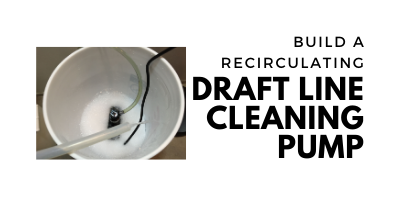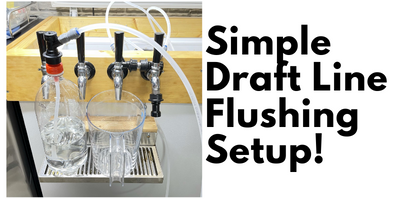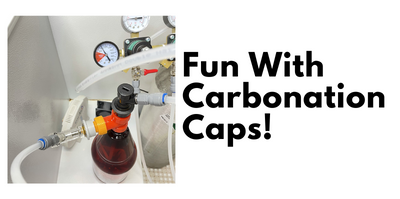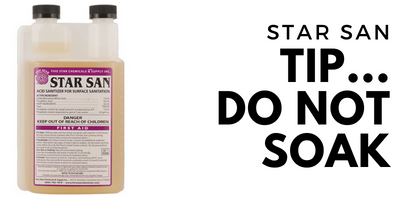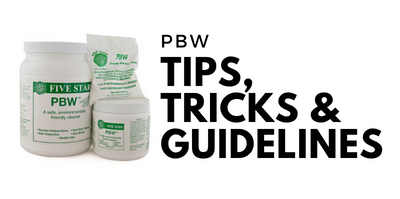
Hands on Review: Safecid Beer Line Cleaner
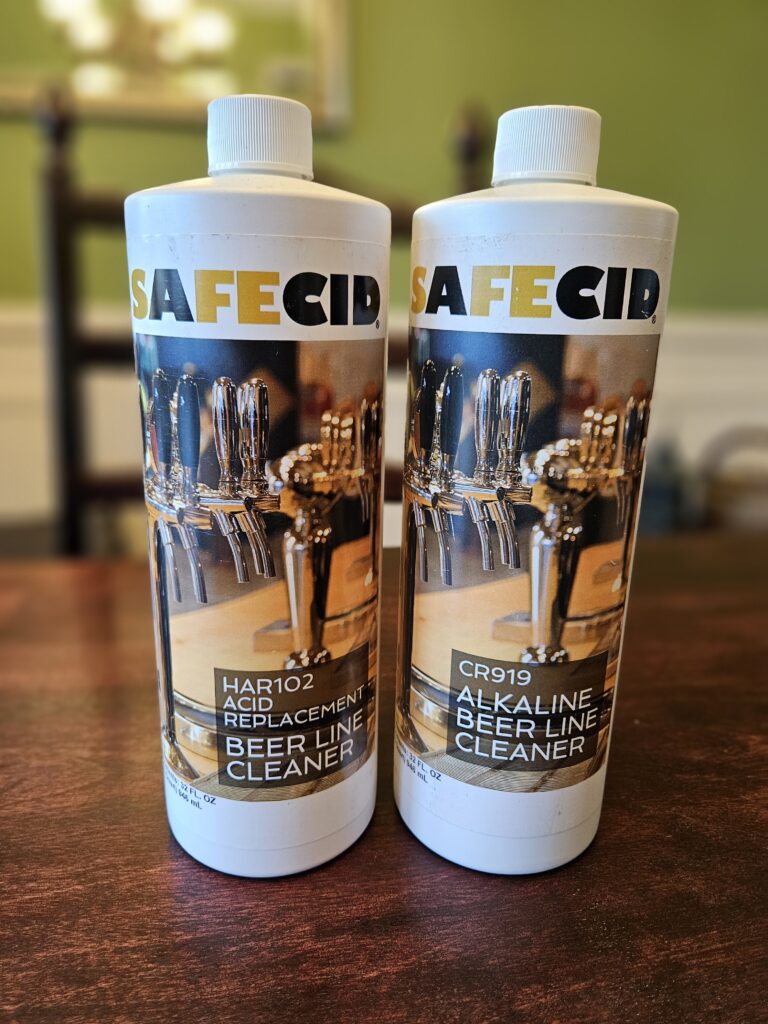
This review is by Homebrew Finds Contributor Brad Probert. Brad is an engineer, expert homebrewer and experienced reviewer. Grab a link to Brad’s website at the end of this review.
Safecid Cleaner
Those of us that have kegerators know that cleaning the beer lines is a necessary thing. We also know that cleaning them is a pretty unexciting event. Products for cleaning them are generally unexciting as well because they’re all pretty similar. There is one product that is different- Safecid Beer Line Cleaner.
Check Current Pricing & Availability:
- Safecid CR919 Alkaline Beer Line Cleaner 32 Fl Oz
- Safecid HAR102 Acid Cleaner 32 Fl Oz – Powerful & Safe Beer Stone Remover – Nontoxic Beer Line Acid Rinse – Low-Foaming Acid Replacement Line Cleaner
These are affiliate links. Note that multiple variations of these products may be available, as such a different version may appear at these links
Safecid has both an acid cleaner and an alkaline/caustic cleaner. The cleaners are as potent as other cleaners, but their patented chemistry makes it non-toxic. This means it is neither harmful to people (skin, eyes), nor harmful to the water supply when rinsed down the drain. And that’s what makes it different from other cleaners.
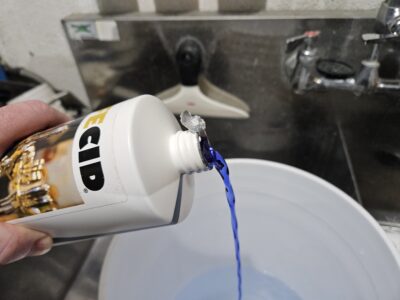 Alkaline Cleaner Distinct Blue Color
Alkaline Cleaner Distinct Blue Color
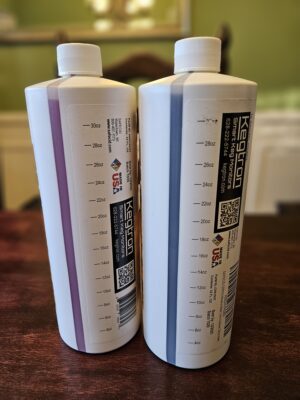 See-Through Volume Markings
See-Through Volume Markings
The Brewer’s Association publishes draft beer cleaning guidelines for bars/breweries. They recommend a cleaning period of every 2 weeks, based on research looking at bacteria build-up in the lines. The research looked at the growth of both aerobic bacteria (leading to sour and vinegar off-flavors) and anaerobic bacteria (leading to butter and caramel off-flavors). This bi-weekly cleaning is to be done with an Alkaline cleaner, and then every 3 months an acid cleaner should be used. The alkaline cleaner deals with organic compounds (bacteria) and the acid cleaner deals with inorganic compounds (beer stone). They point out that the cleaning frequency is not dependent on how much beer is flowed through the lines- busy taps or slow ones alike.
This article contains affiliate links. We may make a small percentage if you use our links to make a purchase. You won’t pay more and you’ll be supporting Homebrew Finds and more content like this. Thank you for your support!
The full procedure outlined in the Draught Beer Quality Manual is:
- Pre-rinse the lines with water.
- Circulate cleaning solution at a rate ~2x your normal beer dispense rate for 15 minutes (if fluid is not moving, then 20 minutes).
- Flush with water.
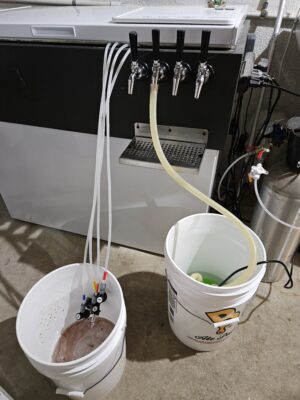 Cleaning Kegerator Lines
Cleaning Kegerator Lines
Related: Build a Recirculating Draft Line Cleaner!
Hands on Trial
While I suppose I could’ve tried to validate their safety claims, I thought maybe the more relevant was to check its cleaning powers. The label on the Safecid bottle recommends diluting their alkaline cleaner at a ratio of 10 oz to 1 gallon of water. The Brewer’s Association manual recommends mixing it at a strength of 2% for regular cleanings, which is 2.5 oz of cleaner to 1 gallon of water, or 3% for heavily soiled lines (3.8 oz per gallon). And my usual line cleaner recommended a mix rate of 0.5 oz per gallon with their cleaner. With so many different numbers, I decided to do a simple experiment to measure the strength and compare Safecid to my usual line cleaner, 5-Star Liquid Line Cleaner.
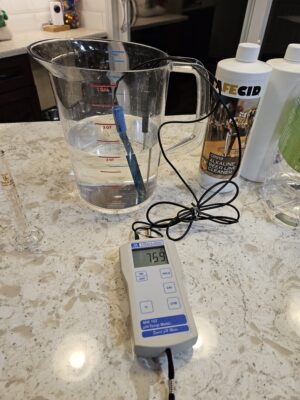
pH Experiment Setup. Related; Milwaukee Instruments MW102 PH and Temperature Meter – Hands on Review
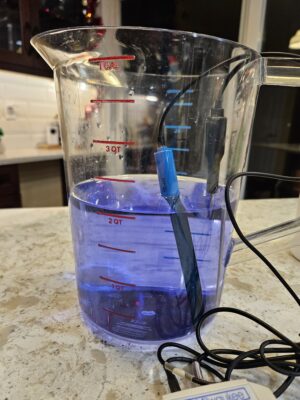
Safecid Alkaline pH Measurement
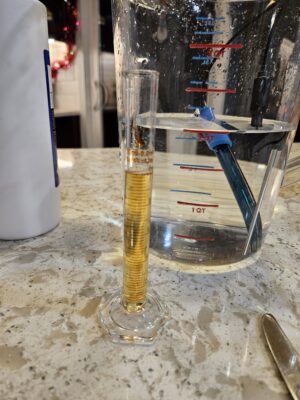
5-Star Liquid Line Cleaner Sample
My experiment was simple. I had room temperature filtered tap water (what I mix my line cleaner with), and I measured the pH with my Milwaukee MW102 pH Meter – Hands on Review. I then measured cleaning solution in a graduated cylinder to add to the water, mixed it up, and then measured the pH until it stabilized. I continued to do this process, adding small amounts at a time. I did this with both the Safecid alkaline cleaner, as well as 5-Star Liquid Line Cleaner. I found that both cleaners had the same strength response, and at 0.5 oz/gallon, it reached caustic cleaning strength.
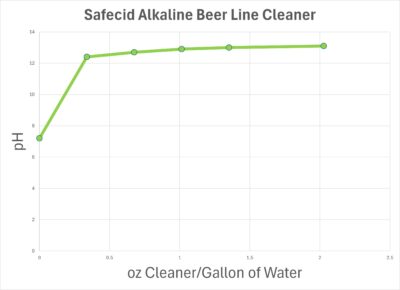
Safecid Alkaline Line Cleaner pH Plot
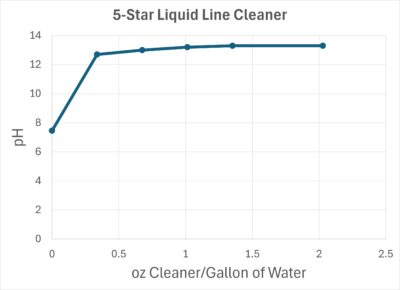
5-Star Liquid Line Cleaner pH Plot
Of course, that strength will diminish the more it reacts with contaminants in the line, so going higher than 0.5 oz/gallon would be wise. Other factors would be the volume of cleaning solution you are cycling, and the number of taps you are cleaning. As the cleaning fluid chemically reacts with the contaminants in your lines, it will start to lose its potency. The Draught Beer Quality Manual lays out a procedure to ensure you have the same volume of cleaner as the sum of all your beer lines in the system. My 4-tap kegerator lines equates to about 0.02 – 0.03 gallons, so my sump pump/bucket arrangement defined the size of my cleaning fluid volume, at 1 gallon (more than enough fluid).
I did an initial line cleaning trial mixed at the 10 oz/1 gallon ratio. Although I couldn’t tell you exactly how clean the inside of the lines were, I can tell you that the clean & shine on my Stainless Steel taps was amazing. I had never seen them that clean, even when they were new.
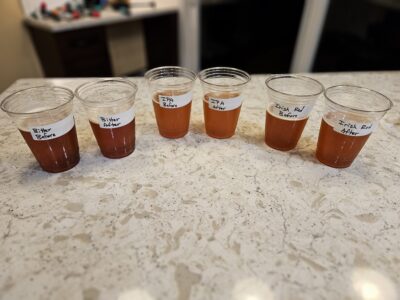
3-Tap Comparison Before and After Cleaning
For the next test, I left my lines uncleaned for 3 months, which is on the longer side of my personal cleaning frequency. I cleaned them with a mixture of 1 oz Safecid with 1 gallon of water. I took beer samples before & after cleaning of the 3 beers I had on tap (Irish Red, British Bitter, and IPA). In an unscientific, non-blind taste test, I thought the freshly cleaned lines were slightly crisper. Aroma-wise, I couldn’t detect a difference. Color-wise, there was a minor trend of the dirty line beers being slightly darker. But it was subtle enough that the camera didn’t really pick it up. The water I flushed the lines with afterwards did show a surprising amount of floaters, letting me know my efforts did in fact make a difference!
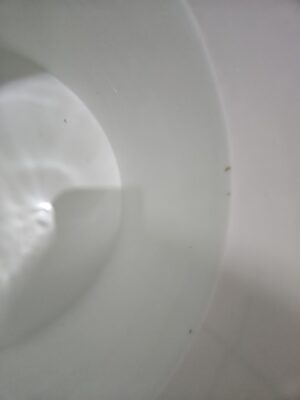
Floaters Washed out After Final Flush
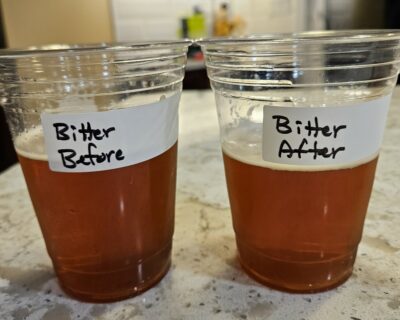
Bitter Before and After Cleaning
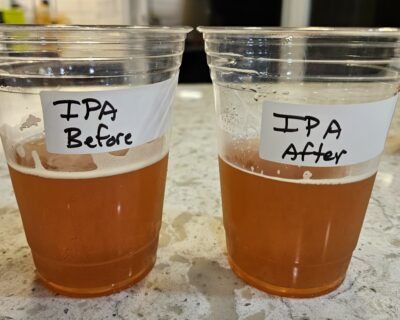
IPA Before and After Cleaning
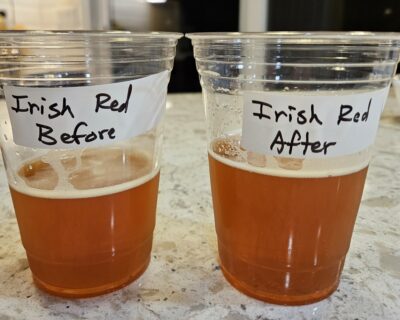
Irish Red Before and After Cleaning
I do know from personal experience that I have put off cleaning and ended up with very notable off-flavors. I thought, “This beer reminds me of one of those bars where I complain to my wife that they don’t clean their lines… Hey, wait a minute!” So logically you need to get a cleaning routine that keeps you ahead of the point where your beer starts tasting sour.
Conclusions
The Safecid cleaner worked well and did the job it’s supposed to do with cleaning the lines. I’ve never had an accident with the regular cleaning fluids. But now that I know there’s an option out there that is chemically safe, and doesn’t compromise on cleaning capability, it seems like an easy risk reduction step.
Special thanks to Kegtron for providing the Safecid cleaning products used in conducting this hands-on trial.
Check Current Pricing & Availability:
- Safecid CR919 Alkaline Beer Line Cleaner 32 Fl Oz
- Safecid HAR102 Acid Cleaner 32 Fl Oz – Powerful & Safe Beer Stone Remover – Nontoxic Beer Line Acid Rinse – Low-Foaming Acid Replacement Line Cleaner
These are affiliate links. Note that multiple variations of these products may be available, as such a different version may appear at these links
Our Line Cleaning Builds:
- Build A Recirculating Draft Line Cleaning Pump
- Mark II Keg and Carboy Cleaner Draft Line Cleaning Pump Conversion
- Building a Simple Ball Lock Draft Line Flushing Setup
Also Consider:
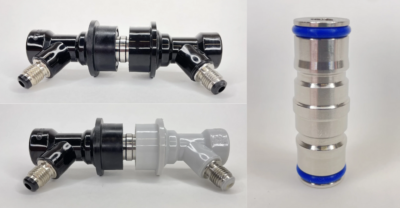 Stainless Steel Ball Lock Jumper with Food Grade Silicone O-Rings: Allows you to connect multiple ball lock runs to clean multiple lines and taps at the same time. Works with both liquid and gas QDs. Stainless Steel Ball Lock Jumper – via Valuebrew – An easy add-on… food grade o-rings, featured in our Keg Rebuild Post
Stainless Steel Ball Lock Jumper with Food Grade Silicone O-Rings: Allows you to connect multiple ball lock runs to clean multiple lines and taps at the same time. Works with both liquid and gas QDs. Stainless Steel Ball Lock Jumper – via Valuebrew – An easy add-on… food grade o-rings, featured in our Keg Rebuild Post
Related:
- Hands on Review: Kegland Ball Lock Cleaning Kit
- Draught Beer Quality Manual… FREE PDF Edition from Brewers Association!
Draft Line Cleaning Solutions and Sanitizers
- National Chemical Keg Beer Line Cleaner for Kegerators 32 oz Bottle
- Search Amazon for “BLC Line Cleaner”
- Tank and Line Cleaner (30) – 30 pre-measured packs
- 32oz. BLC Liquid Line Cleaner – via Keg Connection
- LLC – Liquid Line Cleaner via MoreBeer
- TLC Tank & Line Cleaner – 1 lb. CL38 – via MoreBeer
- Search Amazon for “Star San”
- Search Amazon for “PBW”
More Homebrew Finds!
- Last 50 Finds!
- Top Deals – a curated list of the best deals
- Homebrew Reviews – one of the largest libraries of homebrew reviews in existence!
- Our Top Posts – tips, how-tos, resources posts and more
- Let’s be Friends!
Recent Deals!
10 Most Recent Homebrew Resource Posts & How-To’s!
We are Homebrew Review HQ! Our 10 Most Recent Reviews
This post may contain affiliate links. We may make a commission when you use our links. This will never cost you extra. Thank you for supporting Homebrew Finds!
By Brad Probert. Check out Brad’s website – beersnobby.com
Make sure the components you use are compatible and rated for your intended application. Contact manufacturer with questions about suitability or a specific application. Always read and follow manufacturer directions.
Price, promotions and availability can change quickly. Check the product page for current price, description and availability. tag:lnksfxd review:safecid tag:tpr


